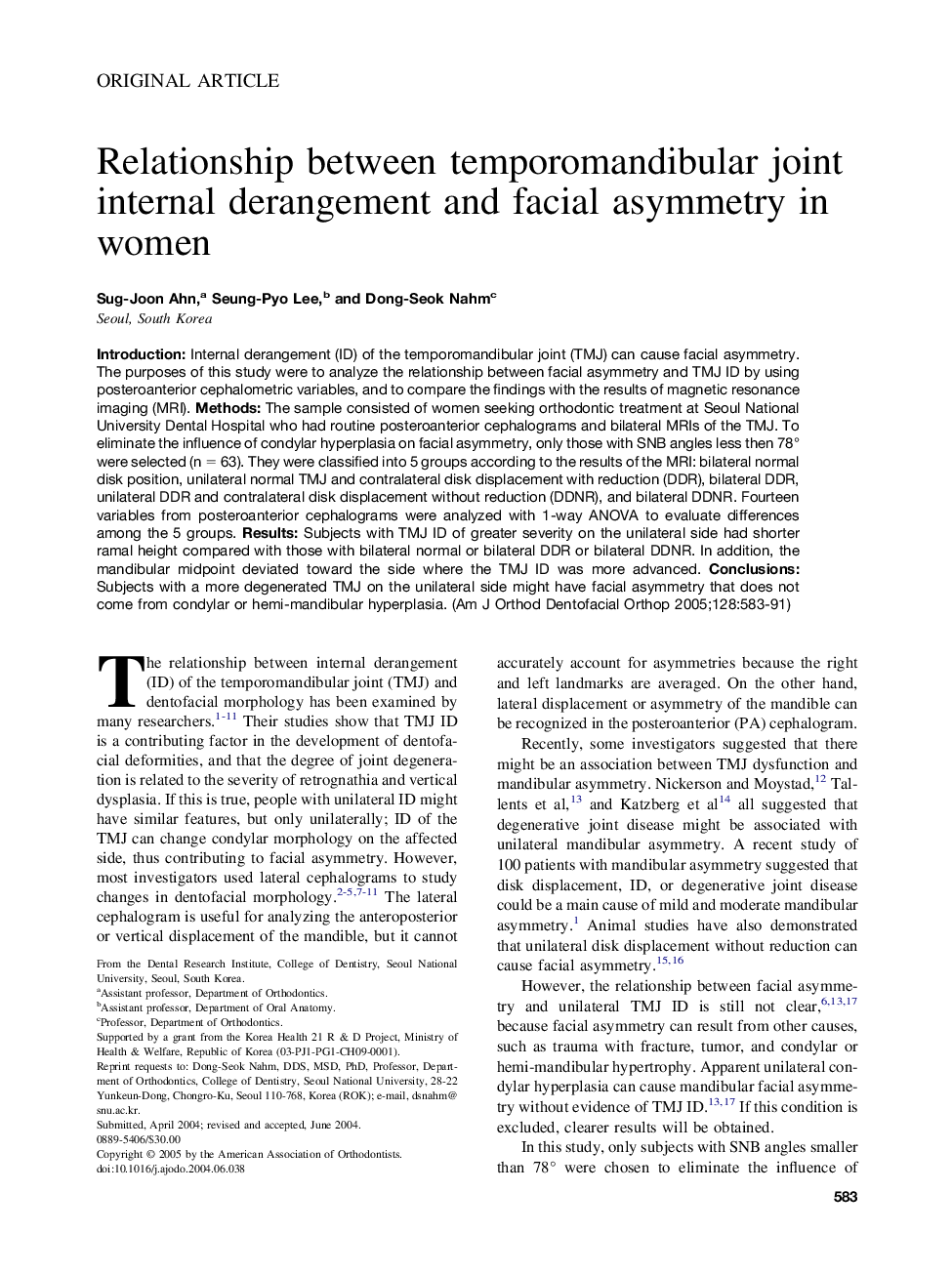| Article ID | Journal | Published Year | Pages | File Type |
|---|---|---|---|---|
| 9992538 | American Journal of Orthodontics and Dentofacial Orthopedics | 2005 | 9 Pages |
Abstract
Introduction: Internal derangement (ID) of the temporomandibular joint (TMJ) can cause facial asymmetry. The purposes of this study were to analyze the relationship between facial asymmetry and TMJ ID by using posteroanterior cephalometric variables, and to compare the findings with the results of magnetic resonance imaging (MRI). Methods: The sample consisted of women seeking orthodontic treatment at Seoul National University Dental Hospital who had routine posteroanterior cephalograms and bilateral MRIs of the TMJ. To eliminate the influence of condylar hyperplasia on facial asymmetry, only those with SNB angles less then 78° were selected (n = 63). They were classified into 5 groups according to the results of the MRI: bilateral normal disk position, unilateral normal TMJ and contralateral disk displacement with reduction (DDR), bilateral DDR, unilateral DDR and contralateral disk displacement without reduction (DDNR), and bilateral DDNR. Fourteen variables from posteroanterior cephalograms were analyzed with 1-way ANOVA to evaluate differences among the 5 groups. Results: Subjects with TMJ ID of greater severity on the unilateral side had shorter ramal height compared with those with bilateral normal or bilateral DDR or bilateral DDNR. In addition, the mandibular midpoint deviated toward the side where the TMJ ID was more advanced. Conclusions: Subjects with a more degenerated TMJ on the unilateral side might have facial asymmetry that does not come from condylar or hemi-mandibular hyperplasia.
Related Topics
Health Sciences
Medicine and Dentistry
Dentistry, Oral Surgery and Medicine
Authors
Sug-Joon Ahn, Seung-Pyo Lee, Dong-Seok Nahm,
